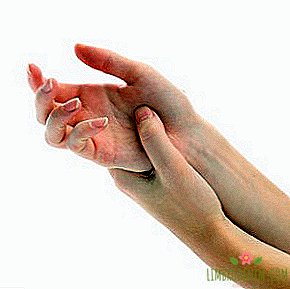Fashion is a political question (or vice versa)
MOST DISCUSSED NEWS ABOUT CLOTHING this year were not strictly speaking about fashion. The brands and the speaking names appeared in them, but the information guide was not a new cut and no change of the creative director. Remember: the debate around the burqini after the performance of the Egyptian athletes at the Olympics in Rio. Bra Susan Sarandon, in which she delivered a speech in memory of David Bowie at the Screen Actors Guild Award ceremony. Then elections in the USA. Jacket Giorgio Armani for twelve thousand euros, in which Hillary Clinton appeared on one of the performances. Gucci blouse with the decor of "Pussy bow", in which Melania Trump came to the debate immediately after the scandal with the statements of Donald Trump: the day before an archival video appeared, in which the future US president talks about how he grabs the women he likes for intimate places (polysemy of the word " pussy "played a cruel joke with a blouse).
Ralph Lauren and Anna Wintour openly support Clinton during the presidential race. Tom Ford, Marc Jacobs and other designers refuse to support Melania Trump, but then Tommy Hilfiger and Ralph Lauren take their words back. Gigi Hadid shows a parody of, again, Melania and then brings a public apology. And in the most discussed way from the first collection of Maria Grazia Kyuri for Dior was a set of a long skirt and white bootie with the inscription "We Should All Be Feminists", which the designer came up with under the impression from the performances of the activist and singer Chimamanda Ngozi Adichi.

In 2016, dresses and sweaters were interesting not as “just clothes”, but as a tool for saying
Of course, clothes are not the first to become statements. Things are the easiest way to give a signal to the world, so clothing has always been one of the channels of communication. In times of unrest and the emergence of new bright subcultures, people used their own cabinets for high purpose especially often. In the nineties, Vivienne Westwood sold T-shirts with the words "Destroy" over the fascist swastika in bundles. In the seventies and eighties, the phenomenon of power dressing appeared - women dressed in formal suits that resembled men in their brides. Their style symbolized equality in the professional field, regardless of gender. And before that, in the sixties, students in the United States drew the “footprint of the great American hen” - the “Peace” badge. In the days of the Vietnam War, young people were opposed to protesting, and she did it in all possible ways.
Another thing is that right now the social and political semantic load has become a mainstream trend. Today, loud statements are made by all - and workers of the fashion industry as well. In the press, in personal instagram accounts and on twitter of designers, messages appear on the clothing itself that cannot be read in two ways - this is a civic position that is not supposed to be hidden.
One of the most illustrative examples was the opening-winter show of Opening Ceremony. Carol Lim and Umberto Leon turned the podium into a platform for debate, where actors, models and public figures spoke about feminism, the fight against racism and global political processes. The clothes themselves were, well, without revelations. And without any subtext - they didn’t put slogans on things, didn’t paint them in LGBT flags, and didn’t decorate them with portraits of world leaders. The show was made much thinner: so Lim and Leon made it clear that clothing is secondary. This year, she retreated into the background, even during Fashion Week.
In 2016, dresses and sweaters were interesting not as “just clothes”, but as a tool for saying things. This was shown everywhere - from the Beyonce "Lemonade" series of clips, which, for all their fashion, were about #blacklivesmatter, to Hillary Clinton's election campaign, which competently played on the eighties power dressing and even revived the movement of women in pantsuits. Politics, fashion and pop culture turned out to be parts of one whole this year and divided the audience.
When Karl Lagerfeld brought the Chanel show to Cuba, the same publications wrote about the event from two diametrically opposite positions. On the one hand, they talked about what an important step it is, because for the first time a show of such a level was held in Cuba. On the other hand, some called the Lagerfeld decision scandalous, because very expensive items were shown in a very poor country (the same claims would later be presented to the Brazilian Louis Vuitton show). Not a single big fashion event of the year has been done without intent consideration from various sides, so that clothing as a design object turned out to be far from the first place.
In general, this is not too unexpected. Fashion does not form reality, but reflects it, but a lot has changed in the past 365 days. The pop cultural field of this year largely consisted of important, strange and terrible events on a global scale: the UK left the EU, tense elections took place in the United States, not to mention the news bulletin from Syria and the terrorist attacks - and this is only the tip of the iceberg.
When so much is happening in the world, you are first and foremost a person, and then a designer, a welder, a president and anyone else
In this informational tornado there is no need to be selective and separate the political from the aesthetic. Therefore, on Vogue.com (and on many other sites about fashion) appeared the section "Politics". Therefore, Susan Sarandon in a bra for an important award is not just an actress showing her taste, but above all a feminist who opposes bodysharing, ageism and the problems of the patriarchal world. Therefore, during the presidential race, Anna Wintour, whatever financial relationship they linked to Hillary Clinton, turned out to be not the editor-in-chief of American Vogue, but a person with a lot of media weight who advocates ideas of equality and tolerance. Therefore, some designers refused to be involved in Trump's public statements - even if they later repudiated their words, their first human reaction was hardly related to fashion.
"I know people who have recently been subjected to violence and oppression. It's terrible. You know, when Brexit happened, for the first time in twenty years, I felt that maybe I was not welcome in a country that I used to consider to be my home," Ashish said Gupta after Ashish spring-summer show. He went to the bow in a T-shirt with the words "Immigrant", and for the models came up with body art, reminiscent of Indian deities. When this happens in the world, you are first and foremost a person, and then a designer, a welder, a president and anyone else.
Now, in December, it is absolutely unclear what awaits us in the coming year. A huge number of brands are still avoided by politicians, engaging only in fashion. But in 2016, we were finally convinced that our reality became identical to the information field. The more sites for applications, the more people will speak - and designers as well. Wars, elections, competitions, fashion weeks, the death of great people and the birth of celebrity children - these events, so different, are side by side in this information flow. And it’s not so easy to determine where in this reality just the dress ends and the manifesto begins.
Photo: Christian dior





